With the rising concerns of the COVID-19 coronavirus outbreak, various workplaces have begun instructing employees to work from home in order to prevent potential spreading and infection. However, some individuals may find remote working a bit difficult due to limited supervision, team communication, and direction.
To help you out with that, here are 6 collaborative tools that could help you manage your projects, tasks, and communication while working remotely. Best of all, these applications and platforms are free to use.
Trello
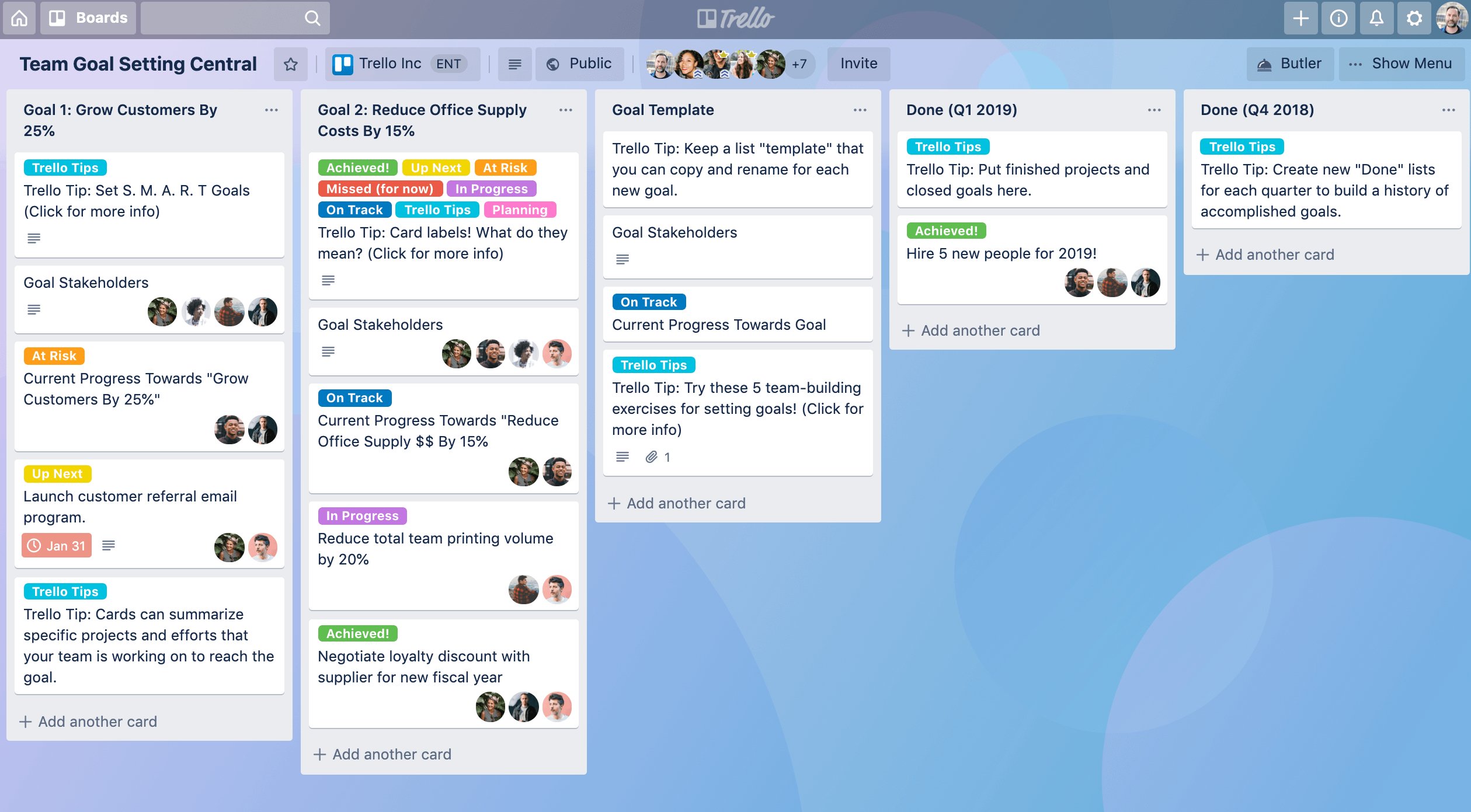
Developed by Atlassian Software, Trello is a web-based project management tool that helps you to keep track and organise tasks via visual boards. This system is inspired by Kanban-style list making, a method that visualises the view of progress and process from start to finish. Kanban aims to manage work by balancing demands with available capacity.
With Trello, you can create task boards that can be moved between several columns. These columns include task statuses such as To Do, In Progress, Done, and can be further customised to suit your working methods. This tool is commonly used for real estate management, software project management, accounting, and so on.
Microsoft Teams
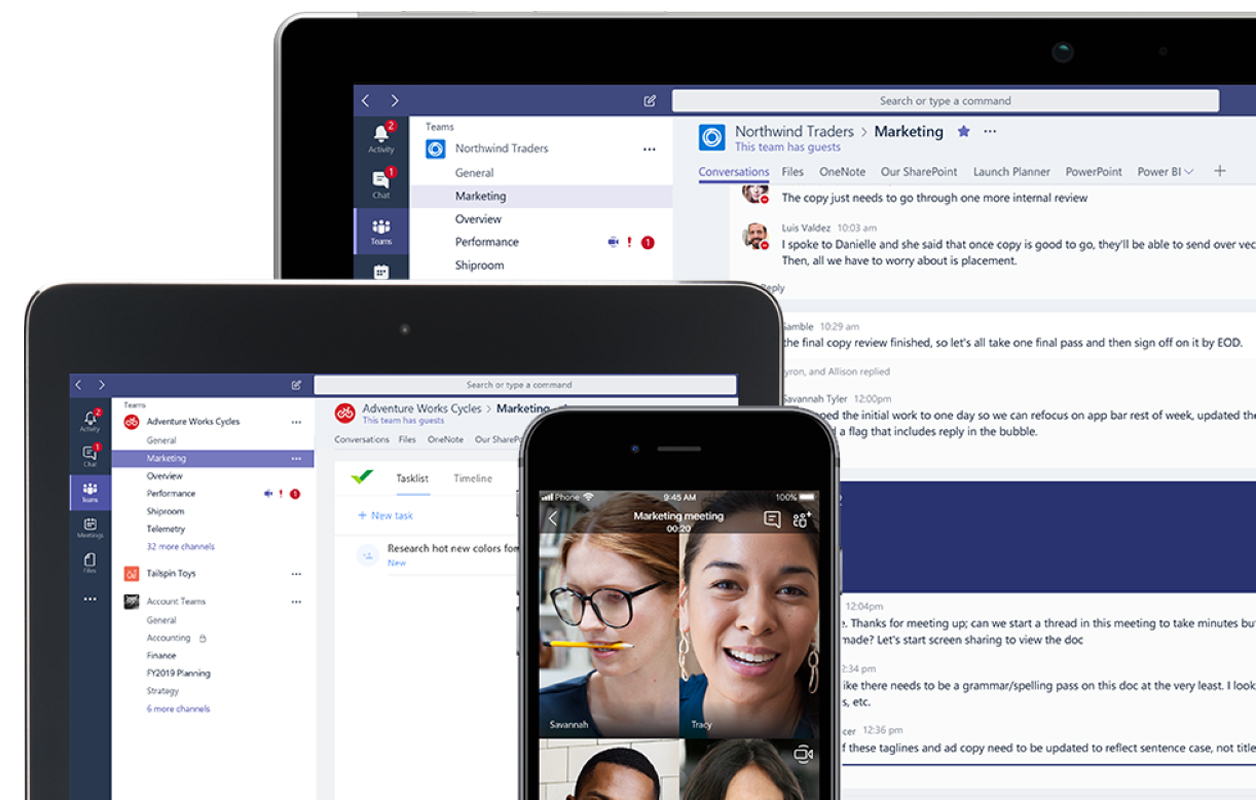
Microsoft Teams is a unified platform that integrates workplace chat, video conferencing, as well as file sharing and storage. It enables local and remote workers to collaborate on content in real-time across multiple devices including laptops, tablets, and phones.
Besides offering a chat-based workspace, Teams allows users to create different channels to organise their communications by topic. Furthermore, users can use Microsoft based applications such as PowerPoint and Excel within the application during a session, which participants can also edit or contribute in real-time.
Originally part of the company’s Office 365 subscription, a free version of Teams was released in September 2019 for Windows, MacOS, iOS, Android, Linux and web. This version of the platform allows for only 300 members per organisation, storage limit of 2GB per user and 10GB shared, guest access, 1-to-1 and group calls for both audio and video, channel meetings, and screen sharing.
Slack
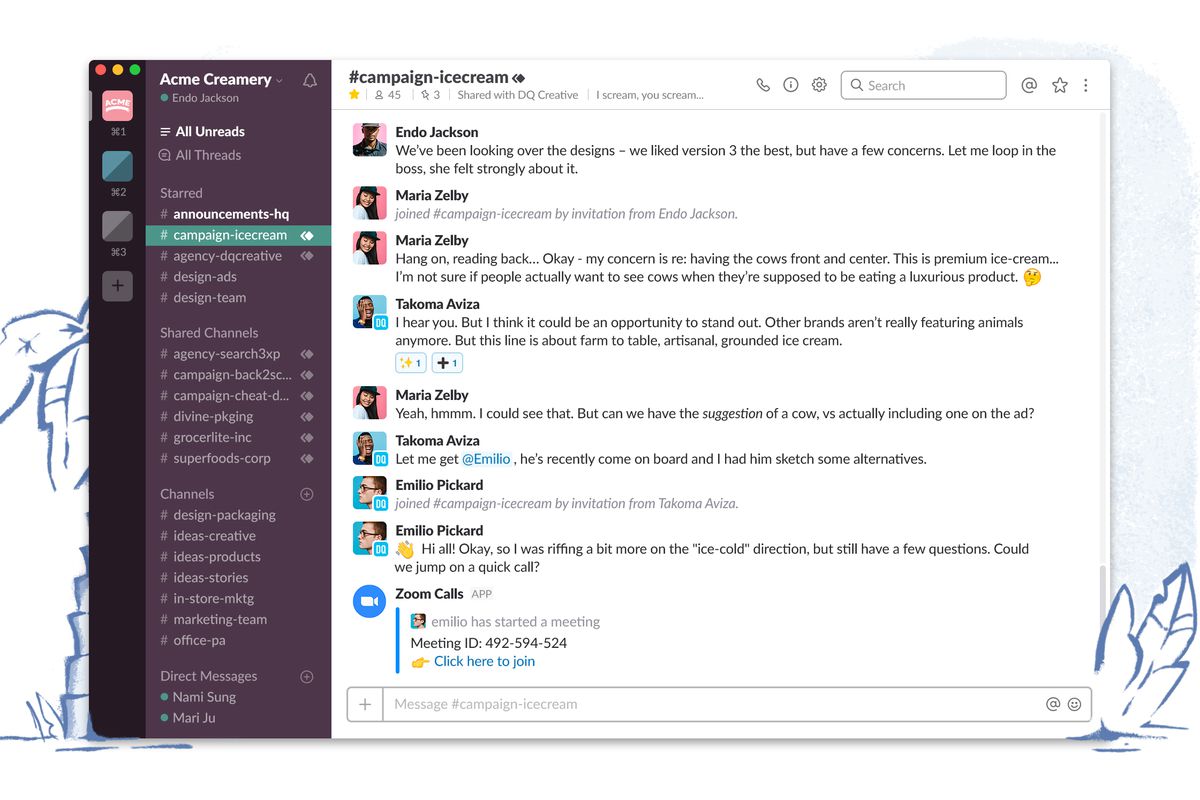 Some call it Discord’s serious cousin, mostly thanks to its almost similar looking interface. Slack is a proprietary messaging platform that offers Internet Relay Chat (IRC) features including topic-based chat rooms, private discussion groups, and direct messaging.
Some call it Discord’s serious cousin, mostly thanks to its almost similar looking interface. Slack is a proprietary messaging platform that offers Internet Relay Chat (IRC) features including topic-based chat rooms, private discussion groups, and direct messaging.
On top of that, content including files, chat conversations, and list of participating members are all searchable within Slack. However, only 10,000 most recent messages are visible and can be searched on the free version of the service.
Furthermore, the platform also offers integration of over 2,000 third party applications including Google Drive, Dropbox and Office 365. Its Teams feature enables communities, groups, or teams to join a workspace via a specific URL or invitations sent by an administrator or leader.
Slack is available on web, iOS, Android, and client downloads on macOS, Windows, and Linux. It also offers paid premium features that allows for an unlimited number of message searches, third party application integration, and users.
Google Hangouts
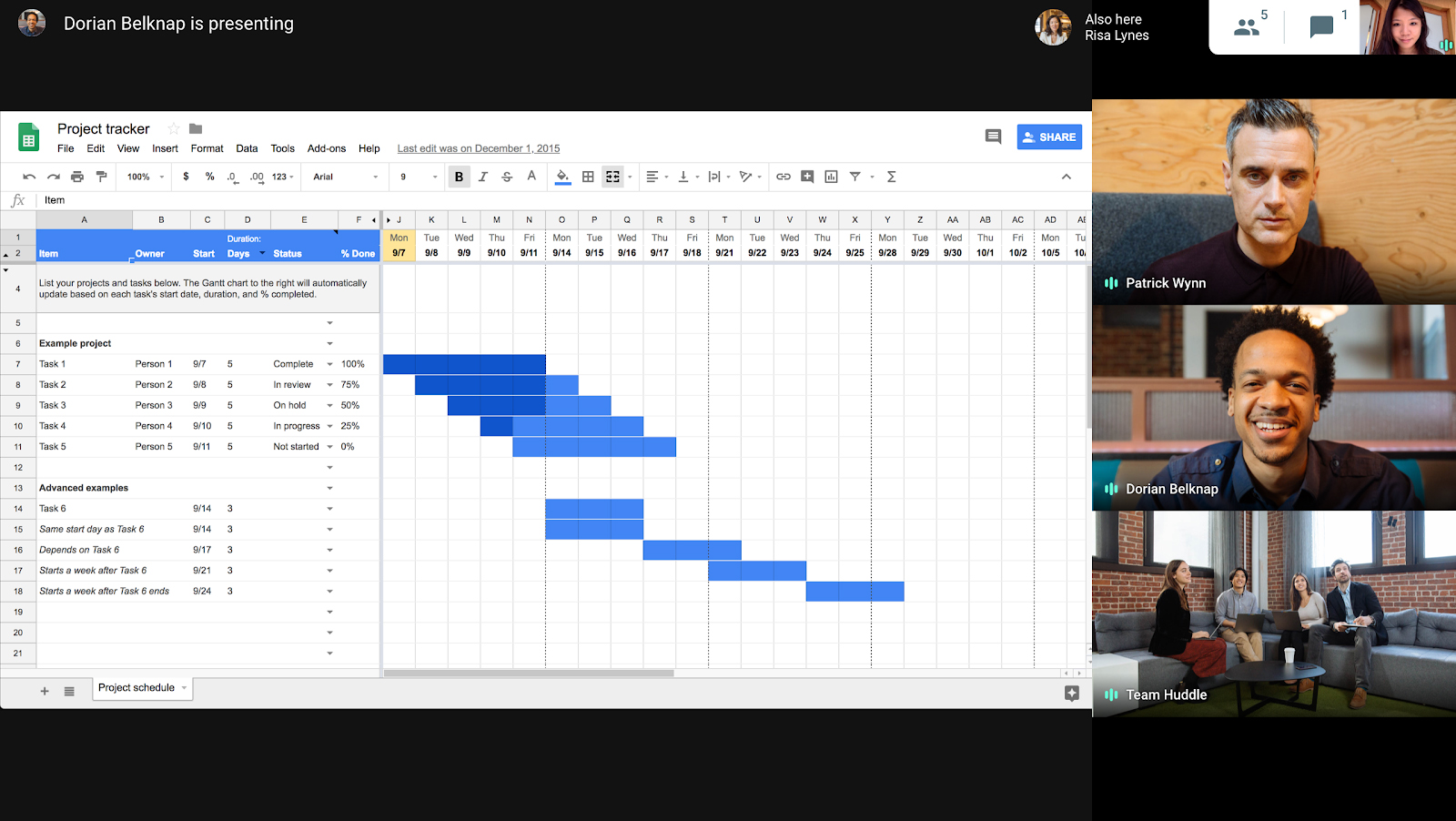
Hangouts was originally a feature of the now-defunct Google+ social media platform, and then later became a stand-alone product in 2013. The platform is a unified communications service that allows two or more members to participate in text chat, as well as voice and video calls.
The service is available to all users with a Google account for free, and does not require installation if activated via the Chrome web browser. Hangouts allow up to 25 active users per session and also provides other features such as photo sharing, built-in screen sharing, and integration with other Google applications.
Google Hangouts is accessible on web, Android and iOS devices, laptops, and computers. An enterprise-friendly version of the platform, called Hangouts Meet, is also available for G Suite users which allows for a larger participant count, encrypted calls, and much more.
Skype
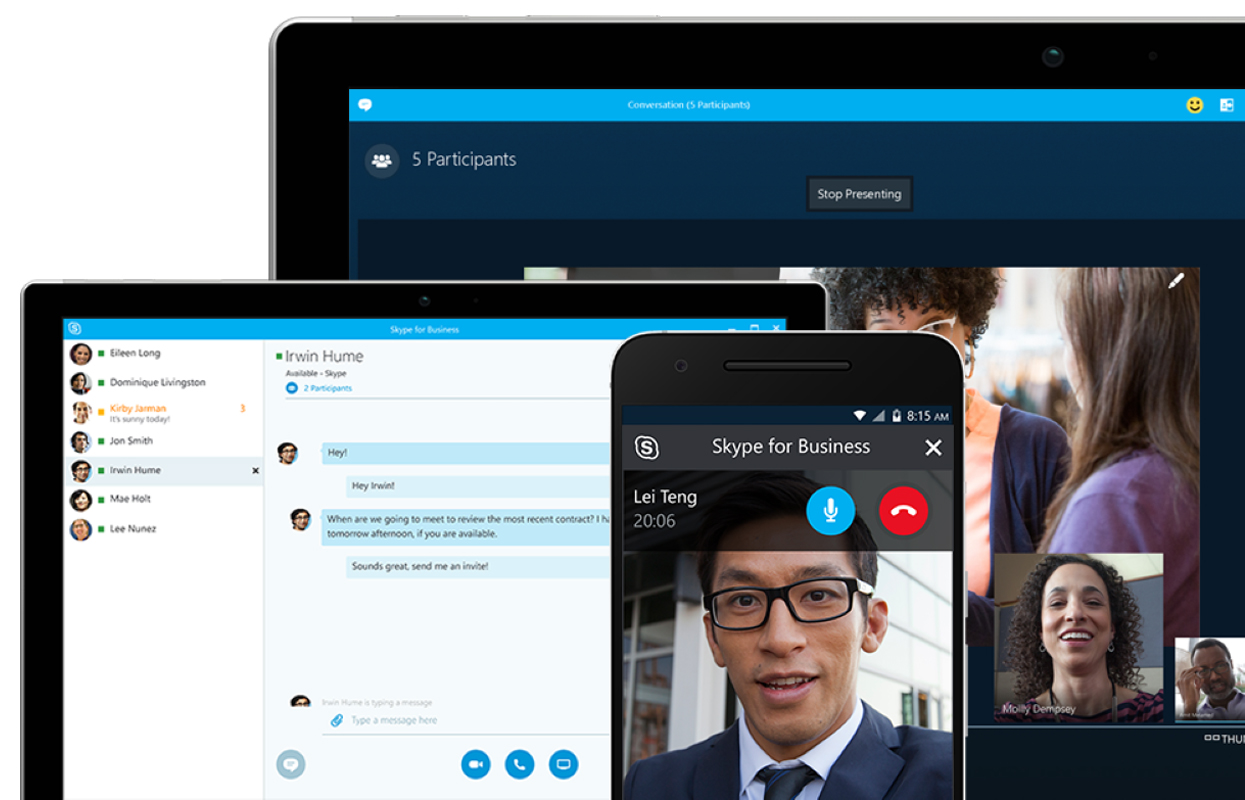
Yet another Microsoft-owned collaborative platform, Skype is a communication application that provides private messaging, as well as voice and video calls. One unique feature found on the platform is the ability to make calls to landline and mobile phone numbers.
Besides that, the service also allows users to store their Skype contacts in a directory, record both audio and video calls, initiate private and encrypted conversations, and provide screen sharing for photos and presentations. For audio and video conferencing, Skype can host up to 50 people per session. It’s available on Android and iOS devices, Windows, Mac, Linux, as well as Xbox consoles.
Apple FaceTime
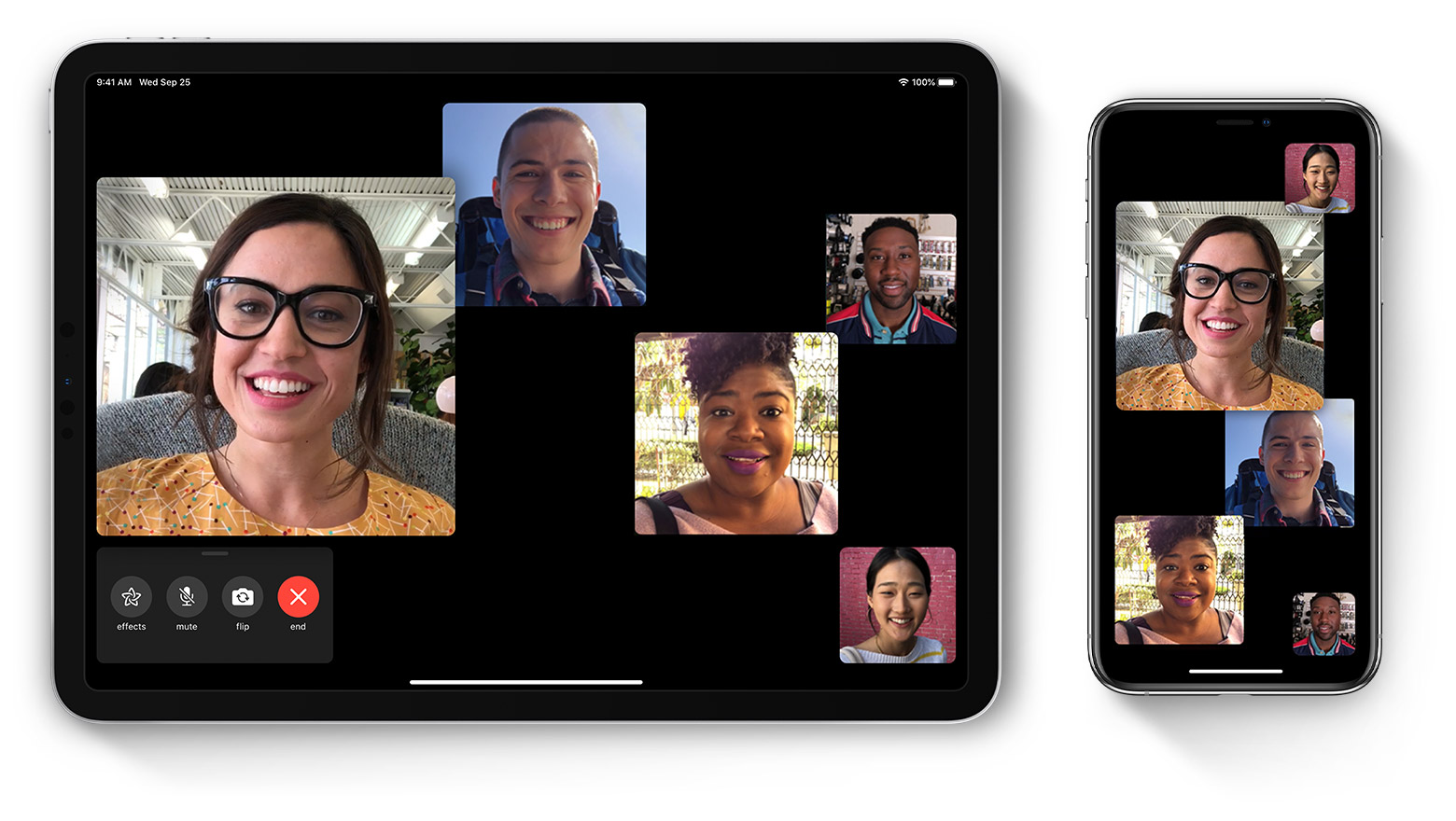
A proprietary product of Apple, FaceTime is a video conferencing service exclusive to the company’s devices including iPhones, iPad, MacBooks, and iMacs. The service also supports audio-only calls via data as an alternative from using number-to-number calling.
While FaceTime’s offering is pretty standard in terms of features, it’s still a widely used service among users within the same Apple ecosystem.

Hopefully these tools could provide you with the essential features to help boost productivity and communication while working remotely. Most importantly, remember to take care of your health and stay safe.
Follow us on Instagram, Facebook, Twitter or Telegram for more updates and breaking news.



